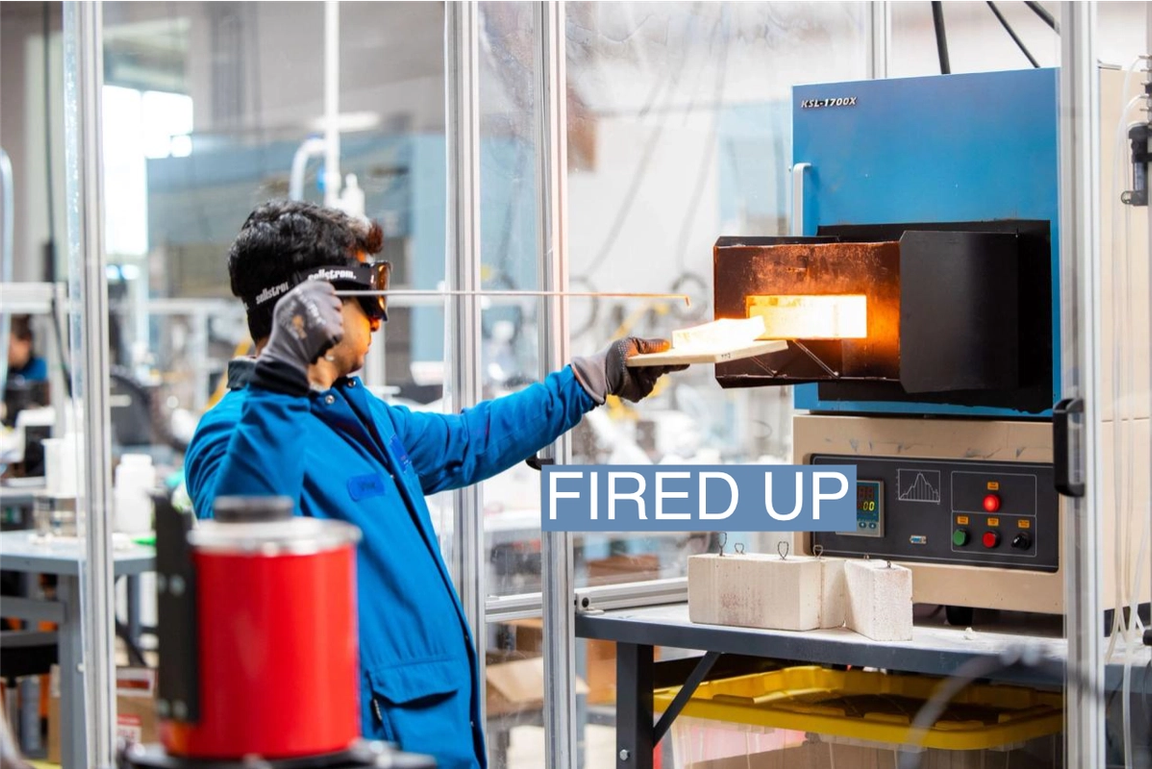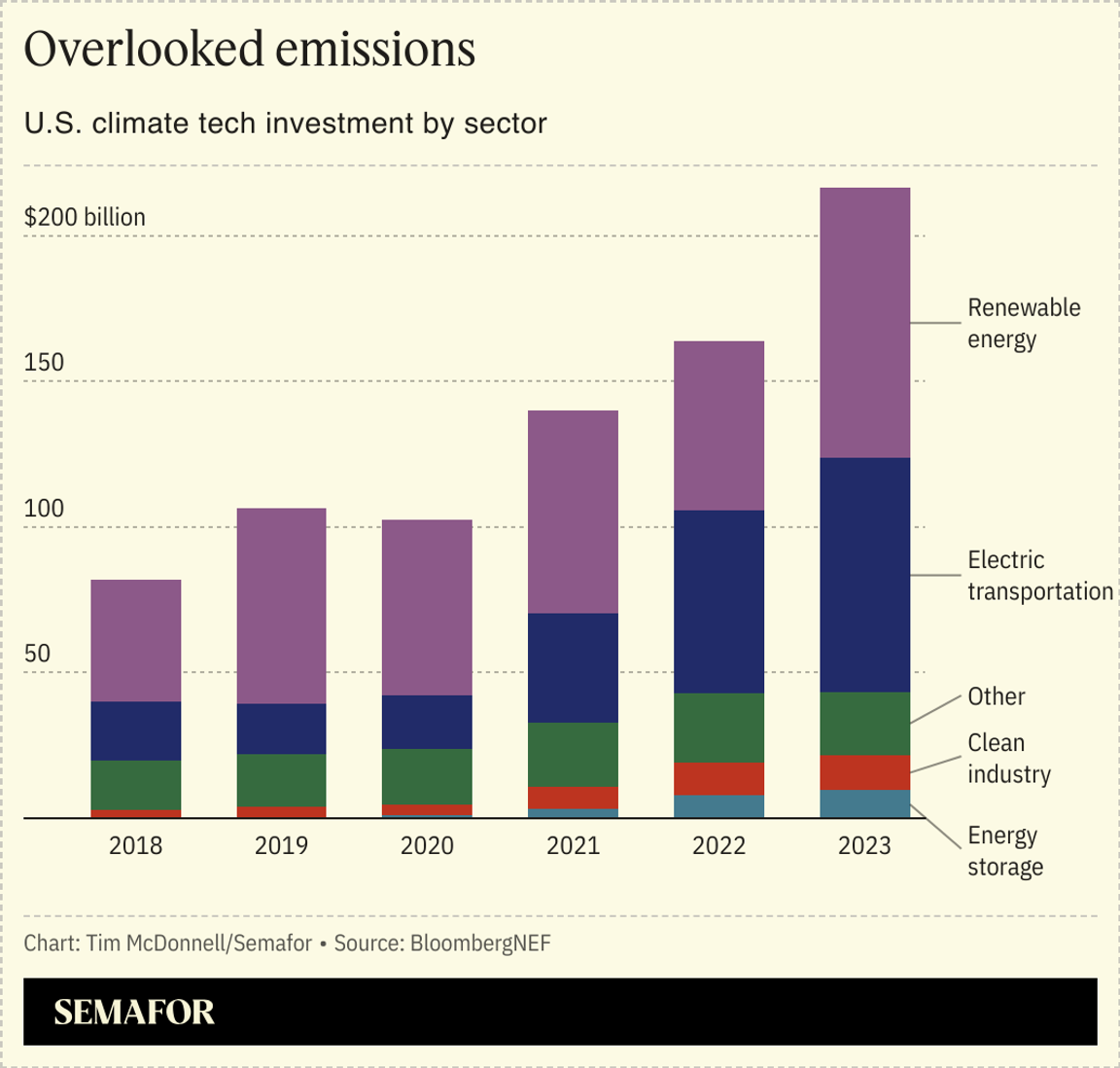 Courtesy of Brimstone Courtesy of BrimstoneThe U.S. Department of Energy announced this week it will dole out $6 billion in grants to cut emissions from three dozen factories across a wide range of industries — including steel, cement, aluminum, even whiskey and pasta. The Biden administration’s climate strategy up to now has focused primarily on cutting emissions from the power and transportation sectors, particularly via wind and solar energy and electric vehicles. The new funding targets heavy industry, which accounts for one-third of the country’s carbon footprint but has seen much slower progress on decarbonization because the technologies involved are mostly new and have rarely been tried at commercial scale. The combined emissions savings from all 33 projects would be equivalent to taking three million gas-fueled cars off the road, Kelly Cummins, acting director for the DOE’s Office of Clean Energy Demonstrations, told Semafor. And if all goes according to plan, that’s just a down payment on bigger cuts in the future.  “We want to make sure these are not just one-off projects,” she said. “The only way we’re going to meet our long-term climate goals is if we get replication from these demonstration projects.” It may be time to retire a climate cliché: Emissions from the sectors targeted in this program are sometimes called “hard to abate,” because many industrial processes require high temperatures from burning coal and natural gas that aren’t easily replaced by low-carbon electricity. But research and innovation over the past few years have delivered a range of technological solutions for high-carbon industries. Now, the biggest obstacle is getting factory owners, their customers, and their financiers to take a gamble on bringing those from the lab to commercial scale. The new round of DOE funding is meant to lower the stakes. |